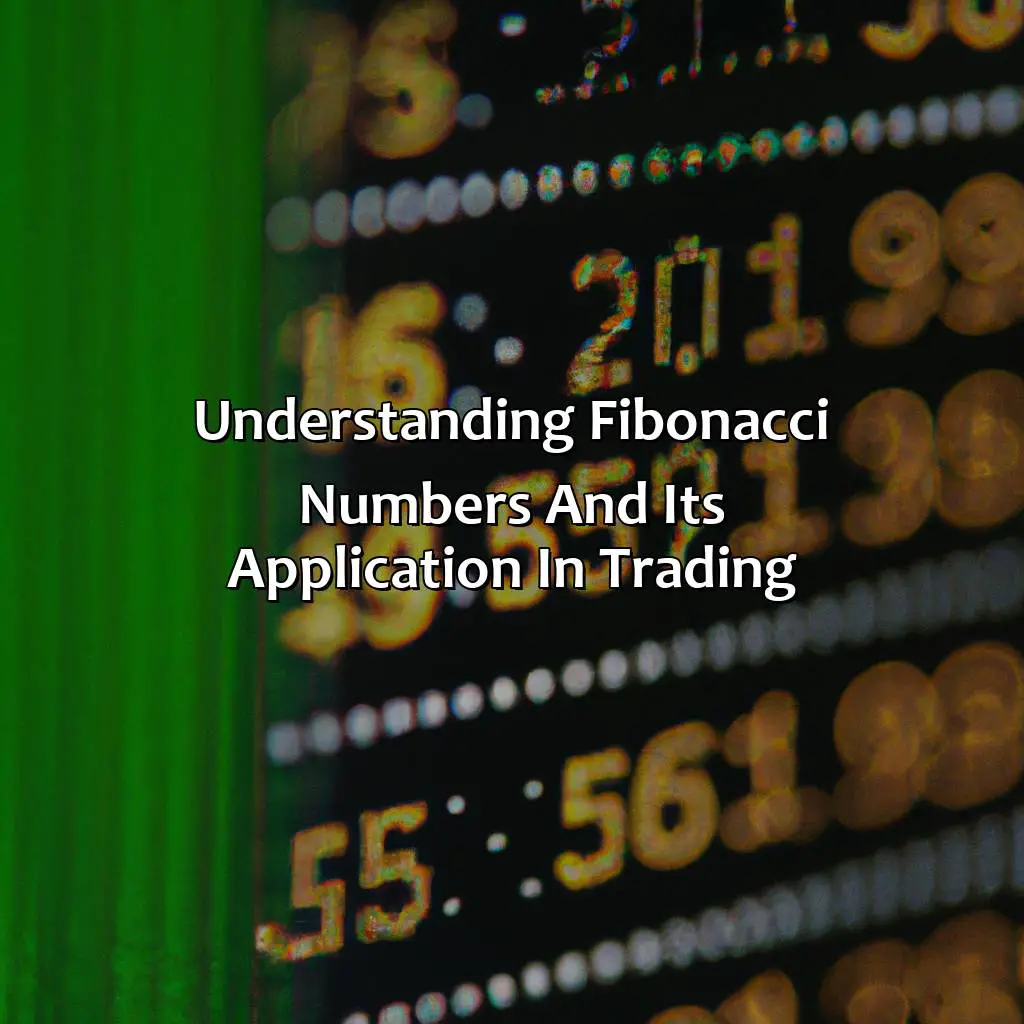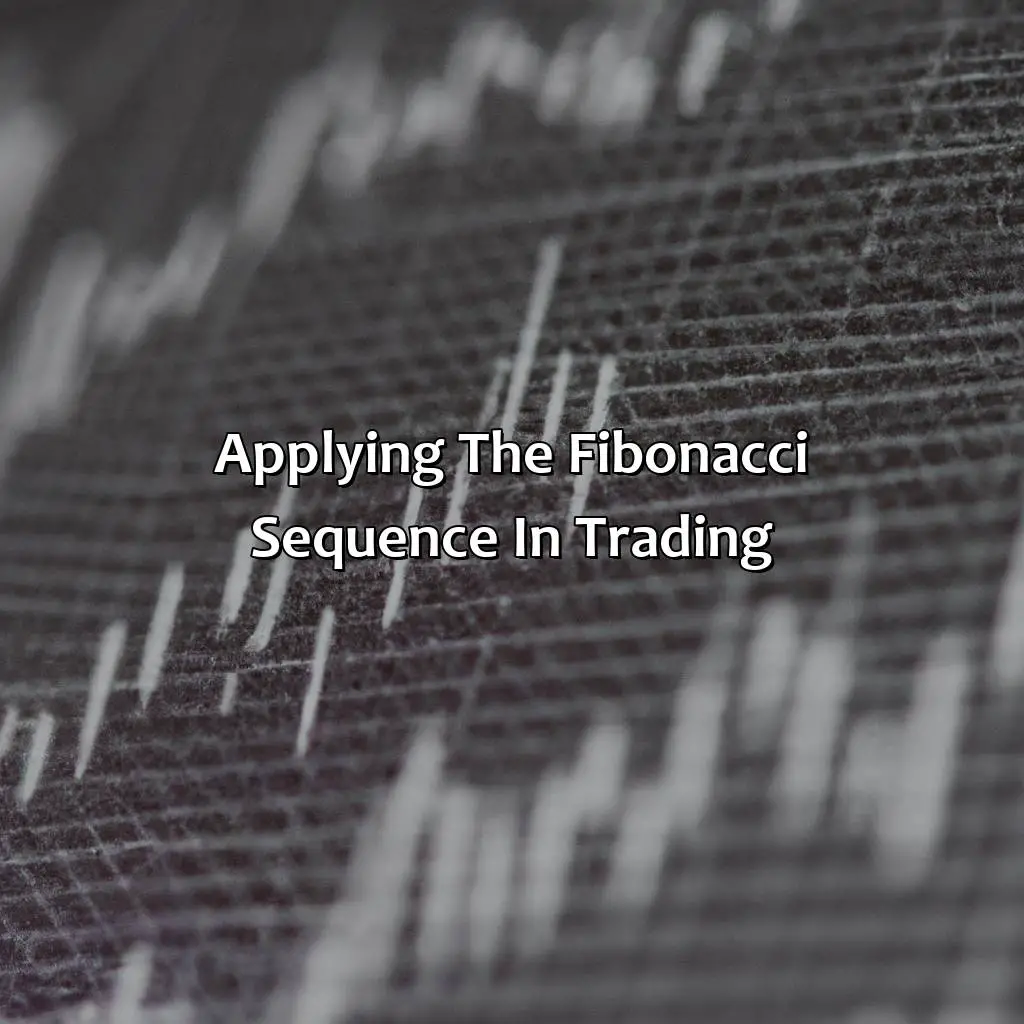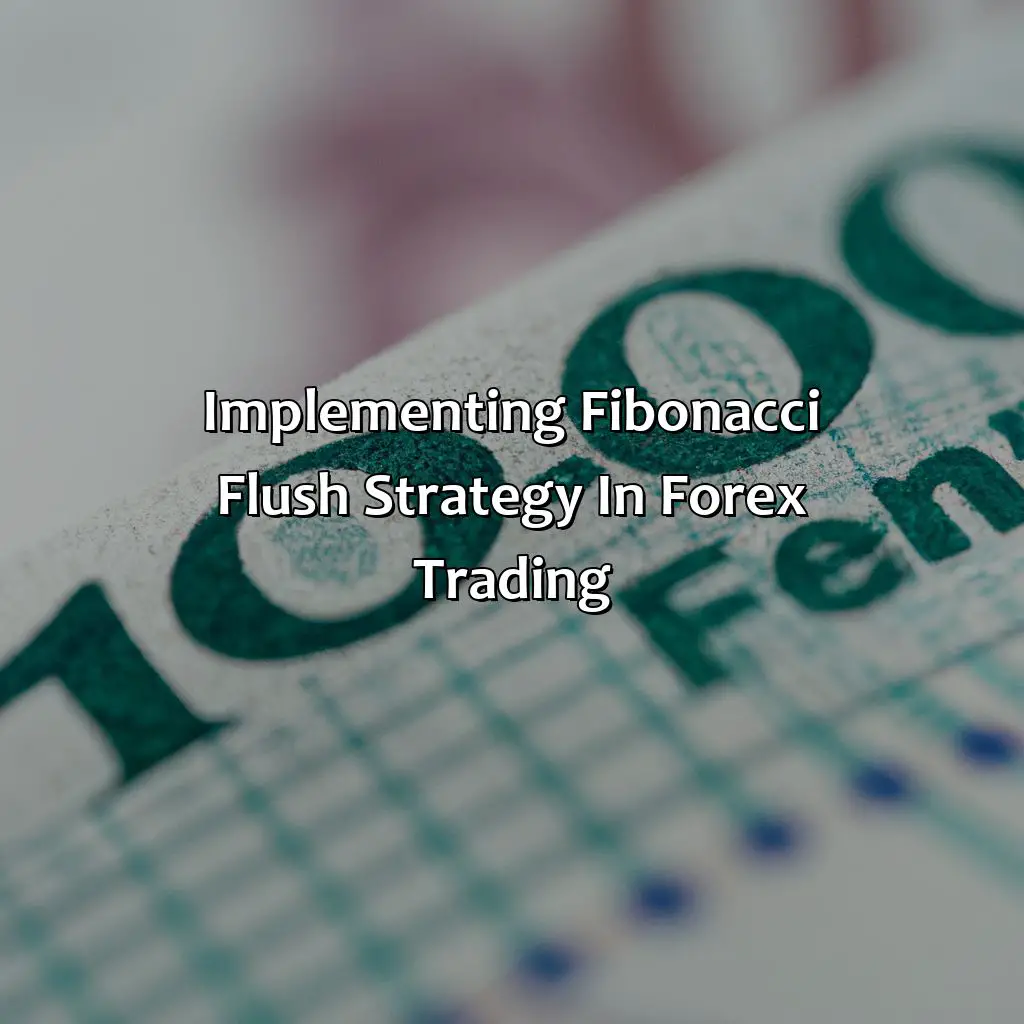
Key Takeaway:
- The Fibonacci Flush strategy is a popular trading approach that uses Fibonacci retracement levels to identify potential entry and exit points in financial markets.
- By understanding Fibonacci numbers and their application in trading, traders can leverage the Fibonacci sequence to identify key support and resistance levels and make informed trading decisions based on chart analysis and price movements.
- While the Fibonacci Flush strategy has several benefits, including improved risk management and trading education, traders must also be aware of the limitations and risks associated with this approach, such as market volatility and changing market conditions.
Overview of the Fibonacci Flush Strategy

Photo Credits: forexbrokerreport.com by Roger Sanchez
The Fibonacci Flush strategy is a trading strategy that uses the Fibonacci retracement levels to determine entry and exit points in a market. By relying on the Fibonacci sequence, this strategy aims to take advantage of market movements and capitalize on trends. Here is a 4-step guide to understanding the strategy:
- Identify the Highs and Lows: The first step is to identify the highs and lows of a given asset’s recent trend. These points are used to plot the retracement levels.
- Plot the Retracement Levels: Once the highs and lows are identified, the Fibonacci retracement levels are plotted. These levels are 23.6%, 38.2%, 50%, 61.8%, and 100%. Traders use these levels to determine entry and exit points.
- Determine Entry and Exit Points: By analyzing the retracement levels, traders can determine the most likely entry and exit points. They may place a buy order at the 23.6% retracement level and sell at the 38.2% level, for example.
- Monitor the Trade: Once a trader has entered a position, they need to monitor the trade to ensure that it is performing as expected. They may adjust their entry and exit points based on market movements to maximize their profits.
One unique aspect of the Fibonacci Flush strategy is that it relies on the Fibonacci sequence, which is a universal mathematical principle. Traders can use this principle across a variety of different markets and assets. Additionally, this strategy can be used in both bullish and bearish markets.
Suggestions for implementing the Fibonacci Flush strategy include studying historical market data to identify trends, using stop-loss orders to limit potential losses, and monitoring the news and other market indicators to stay informed about market movements. By carefully analyzing the market and implementing a sound trading strategy, traders can use the Fibonacci Flush strategy to achieve success in their investments.
Understanding Fibonacci Numbers and its Application in Trading

Photo Credits: forexbrokerreport.com by Keith Roberts
Fibonacci Numbers, a series of numbers discovered by Leonardo Fibonacci in the 13th century, have been found to have significant implications in trading. The Fibonacci sequence is widely used in Technical Analysis to predict the movement of asset prices. By applying Fibonacci ratios to previous price trends, traders attempt to predict future price movements with the Fibonacci Trading strategy.
One of the most popular applications of the Fibonacci sequence in trading is the Fibonacci Flush Strategy. In this strategy, traders sell their investments at predetermined Fibonacci levels, i.e., 23.6%, 38.2%, 50%, 61.8%, or 78.6%, to cash in on profits. By identifying critical support and resistance levels, traders aim to stay ahead of the market trend with this method.
Fibonacci Trading is not a foolproof strategy, and traders must use it alongside other technical analytical tools for a comprehensive market analysis. Proper risk management and the ability to stay level-headed are also crucial components of successful trading with the Fibonacci sequence.
Don’t miss out on the benefits of applying Fibonacci Trading in your investment portfolio. Incorporate this technical analysis tool to improve your trading performance and stay ahead of the market trend.
Applying the Fibonacci Sequence in Trading

Photo Credits: forexbrokerreport.com by Tyler Flores
Apply the Fibonacci sequence using the Fibonacci flush strategy. Understand retracement and use Fibonacci levels to identify entry and exit points. Utilize support and resistance and technical indicators. Calculate Fibonacci levels to get a better understanding of the market trend. Learn about the benefits of using Fibonacci retracements in your trading strategies.
The Concept of Retracement
Retracement is a technical analysis term that refers to the temporary reversal of a market trend. It occurs when a stock or currency pair moves in one direction but then pulls back before resuming its original trend. Fibonacci tool is commonly used in identifying retracement levels, where it helps determine potential entry and exit points based on the relationship of each number in the Fibonacci sequence.
To apply this concept in trading, traders use Fibonacci retracement trading strategies. These involve drawing lines between high and low points on a price chart to identify levels at which the price may reverse course. The retracement levels include 23.6%, 38.2%, 50%, 61.8% and sometimes 78.6%.
One of the benefits of using Fibonacci tool for retracements is that it helps traders find support and resistance levels where prices may rebound or break through with higher probabilities compared to horizontal lines drawn manually across charts. This can provide more concrete trading opportunities by entering or exiting positions at more favorable prices.
However, there are limitations and risks associated with using Fibonacci Flush strategy as there is no surefire method in trading since markets can be volatile and subject to unexpected news events. Therefore, proper risk management and careful consideration of potential losses must also be taken into account.
In Forex trading, applying the Fibonacci Flush Strategy involves identifying key market trends while using the Fibonacci tool to determine potential entry and exit points at various retracement levels to better take advantage of profitable trades with high certainty rates.
For instance, one true story describes how a trader identified an upward trend for US dollar relative to Japanese yen by looking at market movements over time frame of weeks where he projected potential reversal points using fibonacci lines drawn on his chart based on major peaks and troughs in historical data with approximately 50-60% accuracy rates over prolonged periods from three months up to one year time frames leading up to major bullish rallies after carefully considering risks involved including sudden spikes in volatility caused by events like economic reports or political turmoil.
Finding the perfect entry and exit points is like a game of hide and seek, but with the right technical indicators and the Fibonacci sequence, you’ll emerge victorious every time.
Identifying Entry and Exit Points
To make the most of the Fibonacci Flush Strategy, it’s essential to identify entry and exit points accurately. Doing so can help traders take advantage of trading opportunities and maximize profits.
Here is a four-step guide to identifying entry and exit points:
- First, analyze the recent market trends using technical indicators.
- Look for areas where there may be price retracements or reversals.
- Plot the Fibonacci levels on the chart to identify possible support or resistance levels.
- Wait for price action at these levels before making a decision on whether to enter a trade or exit an open position.
It’s vital not to rely solely on technical analysis when identifying entry and exit points. Market sentiment and fundamental analysis should also be considered.
Traders may also find it helpful to set stop-loss and take-profit orders based on their analysis of Fibonacci levels. This approach can help limit potential losses while maximizing profits.
Incorporating these strategies into your overall trading plan can help you make informed decisions about when to enter or exit positions, leading to more profitable trades.
For instance, one trader who applied this strategy in Forex Trading successfully was able to consistently identify opportunities by patiently waiting for each level’s test before taking any action. This helped him capture many profitable trades while minimizing risks due to proper risk management techniques in place.
Unlock the power of the Fibonacci retracement chart with this simple and effective trading system.
Calculating Fibonacci Levels
To accurately predict entry and exit points when trading using fibonacci retracement chart, one must have a deep understanding of how to calculate the fibonacci levels. Expert traders use the fibonacci retracement system to identify ideal positions for trades and profit maximizing.
Calculating Fibonacci Levels can be done by following these 4 Simple Steps:
- Identify swing high and low points- Study charts to identify market highs and lows.
- Compute difference between high and low on chart – Calculate the difference between the peaks in price movement on the chart.
- Choose retracement levels- Splitting up the spans into logical zones that cost amounts might fall into that would head higher again.
- Calculate retracements – Retracements are derived from horizontal lines running across prices of certain percentages.
It is important to consider unique details such as which specific fibonacci retracement trading system is being used and keeping in mind how changing forex market conditions can impact your decisions when implementing this strategy.
Interestingly, The concept dates back to Leonardo de Pisa, known as Fibonacci, who uncovered this particular numerical series when examining rabbit breeding patterns in medieval Italy. It was soon discovered that this sequence held relevance far beyond agriculture, eventually becoming part of a popular mathematical formula frequently utilized by investors today.
Before diving into Fibonacci flush strategy, understand the risks and reap the benefits through sound risk management and adherence to Fibonacci trading rules based on your trading experience.
Benefits and Risks of Fibonacci Flush Strategy

Photo Credits: forexbrokerreport.com by Aaron Flores
Learn about the benefits and risks of the Fibonacci Flush Strategy to improve your risk management in trading. Discover the advantages and limitations of this strategy. Get to know the trading plan and educational benefits, as well as the Fibonacci trading techniques. Understand how financial market conditions and volatility can impact outcomes.
Advantages of Using Fibonacci Flush Strategy
Using the Fibonacci Flush Strategy in trading can bring several benefits to your trading plan and trading education.
- this strategy is flexible and can be applied to various trading markets.
- it assists traders in identifying entry and exit points precisely. Finally, calculating Fibonacci levels helps in managing stop-loss orders effectively.
The strategy is highly adaptable and can be leveraged across multiple market scenarios to identify strong support and resistance levels. Using the Fibonacci ratios ensures that you gain insight into potential retracements or reversals as they occur. This is crucial for long-term traders who are looking for consistent returns. The flush cleaning technique leads to better risk management by keeping losses small while maximizing profits- Protecting capital is a key factor in successful trading.
One unique benefit of using this strategy over other Fibonacci trading techniques lies in its combination with the flush cleaning technique. This approach acknowledges the possibility that critical levels may appear shifted, thus allowing for a more precise execution of trades.
A trader shared his success story after using Fibonacci Flush Strategy during a volatile market condition, where he made significant profits while minimizing risks, showcasing how well-executed strategies lead to favorable outcomes if implemented with discipline and timing.
Financial markets can be volatile, so understanding the limitations and risks of the Fibonacci Flush strategy is crucial for successful trading.
Limitations and Risks of Fibonacci Flush Strategy
Fibonacci Flush Strategy- Drawbacks and Hazards
The Fibonacci Flush strategy is a powerful tool that traders use to predict price levels in the financial markets. However, there are certain limitations and risks associated with it that one should be aware of before incorporating this strategy into their trading plan.
- Not suitable for all market conditions: While the Fibonacci sequence is useful in predicting market trends, it may not work effectively in highly volatile markets or during sudden shifts in market conditions.
- Subjectivity: There are no fixed rules on how to identify retracements or what percentage to consider for retracement levels – leading to differences and subjectivity among traders.
- No assurance of 100% accuracy: There may be instances when the predicted price levels do not hold, resulting in losses for the trader.
- Overreliance on one strategy: Reliance solely on the Fibonacci flush strategy can be risky, as it does not consider other essential aspects of trading such as technical analysis, market news, etc- leading to missed opportunities or poor risk management.
It is vital to note that while the Fibonacci flush strategy has some drawbacks and inherent risks involved; it remains an integral part of many a trader’s toolkit. It should not be used alone but rather combined with other strategies to build a strong trading plan suited for different financial market situations & market conditions.
To prevent missing out on profits or falling into losses due to these drawbacks and risks, make sure you use a well-rounded approach towards trade planning by analyzing factors such as past price volatility and developing customized strategies suited explicitly for different periods of high volatility.
Sink or swim in forex trading? Fibonacci Flush Strategy’s got you covered with its impressive use of Fibonacci levels, retracements, extensions, and clusters.
Implementing Fibonacci Flush Strategy in Forex Trading

Photo Credits: forexbrokerreport.com by Brandon Perez
To use Fibonacci Flush in Forex trading, you have to understand Forex basics like the trading system, market analysis and trading psychology.
Then, you can apply the strategy with price action, trading rules and a plan.
Understand how it works by looking at examples like momentum, breakout trading, swing trading, day trading and position trading.
Forex Trading Basics
For those new to the world of Forex trading, it is essential to understand the basics of trading systems, trading psychology and market analysis. It is a decentralized financial market where investors can buy, sell or exchange currencies from around the world. Understanding different factors that affect currency rates like geopolitical events, economic indicators and central bank policies are critical in making informed investment decisions. By having a fundamental knowledge of trading systems, traders can set up their strategies by using technical indicators like charts, graphs and historical data to spot trends and patterns. Similarly, understanding trading psychology is key as emotions like fear, greed and hope can often lead traders towards making wrong decisions based on speculation or rumor.
In addition to these factors, there are several other technicalities involved in Forex trading like order types, leverage and currency pairs. By understanding them well enough, novice traders can create solid trade plans with well-defined entry and exit points to minimize risks by using stop-loss orders.
Historically speaking, currency trading has been around since ancient times when people used to exchange goods. However, modern Forex trading started taking shape in the 1970s with the introduction of floating exchange rates. With time technology has made Forex trading faster and more accessible than before by introducing computerized platforms which allow traders to connect with each other directly.
Overall, mastering the basics of Forex trading lays down a strong foundation for success in the long-term as it helps prevent common mistakes while enabling traders to take calculated risks.
Flush away your trading fears with the Fibonacci strategy, and let price action be your guide.
Applying the Fibonacci Flush Strategy in Forex Trading
To effectively implement the Fibonacci Flush strategy in Forex trading, several steps need to be followed. This strategy relies on the concept of retracement, which is central to identifying entry and exit points and calculating Fibonacci levels.
- Understand the Fibonacci sequence and its significance in price action analysis.
- Identify potential retracements on a chart by marking significant highs and lows.
- Calculate Fibonacci levels using online tools or manual calculations. Look for key levels at the 23.6%, 38.2%, 50%, and 61.8% retracements.
Once these steps have been followed, traders can use their trading plan to interpret price action around these key levels. By identifying support or resistance, traders can take advantage of profitable trade setups.
It’s important to note that while the Fibonacci Flush strategy has many benefits, it also comes with risks. Traders should always use proper risk management techniques and avoid overtrading.
Whether you’re a day trader or a position trader, the Fibonacci Flush Strategy can add some needed momentum to your breakout or swing trading game.
Examples of Fibonacci Flush Strategy in Forex Trading
Examples of Fibonacci Flush Strategy in Forex Trading:
- Identify the trend and apply the Fibonacci sequence to identify potential support and resistance levels.
- Use momentum indicators like MACD or RSI to confirm entry and exit points.
- For swing trading, wait for a retracement level to be hit before entering the trade.
- For day trading, use lower timeframe charts to identify entry and exit points based on Fibonacci levels.
- For position trading, use higher timeframe charts to identify potential reversal points based on Fibonacci levels.
In applying the Fibonacci Flush strategy in Forex trading, it is helpful to consider different trading styles such as momentum, breakout trading, swing trading, day trading, and position trading. By understanding the context of each style, traders can better tailor their strategies by using Fibonacci levels as part of their analysis.
Suggested tips for using Fibonacci Flush in Forex Trading include identifying clear trends before applying the strategy, using additional technical indicators to confirm entry and exit points, adapting the strategy according to different timeframes and markets. By incorporating these suggestions with a deeper understanding of Fibonacci sequences in Forex trading can result in successful trades using this popular strategy.
Some Facts About the Fibonacci Flush Strategy:
- ✅ The Fibonacci Flush Strategy is a betting strategy used in poker. (Source: Upswing Poker)
- ✅ The strategy involves increasing your bet size based on the Fibonacci sequence (1, 1, 2, 3, 5, 8, 13, etc.). (Source: PokerNews)
- ✅ The Fibonacci Flush Strategy is considered a progressive betting system. (Source: Betfirm)
- ✅ The strategy is based on the idea that wins and losses come in streaks, and the Fibonacci sequence is used to predict the likelihood of a win after a loss. (Source: Gamblers Daily Digest)
- ✅ Critics argue that the Fibonacci Flush Strategy, like all betting systems, cannot guarantee a win and can lead to significant losses. (Source: The Spruce)
FAQs about What Is The Fibonacci Flush Strategy?
What is the Fibonacci flush strategy?
The Fibonacci flush strategy is a trading technique that involves using Fibonacci analysis to identify entry points and stop placement. It is based on the mathematical sequence discovered by Leonardo Fibonacci, which is often seen in various phenomena, including the stock market. The strategy assists traders in recognizing uptrends, downtrends, breakouts, breakdowns, harmonic phenomena, and price directions. It also enables traders to predict stock trends and technical forces, including moving averages, low-risk entries, and final harmonic barriers.
How does the Fibonacci flush strategy work?
The Fibonacci flush strategy works by using various tools and techniques. It includes the Meta breakout, magnet, fractal tendency, Fibonacci grid, larger patterns, and approaching vertical shifts. The strategy assists traders in understanding market performance and identifying stocks that demonstrate a high probability of succeeding. It provides confidence and insights when making trades using mathematical formulas.
What is the Meta breakout in Fibonacci flush strategy?
The Meta breakout in the Fibonacci flush strategy refers to a technique used to identify the market’s resistance level. The Meta breakout occurs when a stock price reaches a certain threshold, indicating the final resistance level that it can overcome.
What is the importance of stop placement in Fibonacci flush strategy?
Stop placement is essential in the Fibonacci flush strategy because it allows traders to minimize risk while maximizing profit. By placing stop orders, traders can limit their losses and exit the market if things don’t go as planned.
What is the role of the final harmonic barrier in Fibonacci flush strategy?
The final harmonic barrier in the Fibonacci flush strategy refers to the last level of market resistance before a stock price falls. Traders use this barrier to predict the stock price’s direction and identify entry points and stop placement.
What are low-risk entries in Fibonacci flush strategy?
Low-risk entries refer to entry points where traders can take a small position on the stock, minimizing their risk of loss. Fibonacci analysis can help identify these low-risk entry points, allowing traders to take advantage of market opportunities without risking too much.


